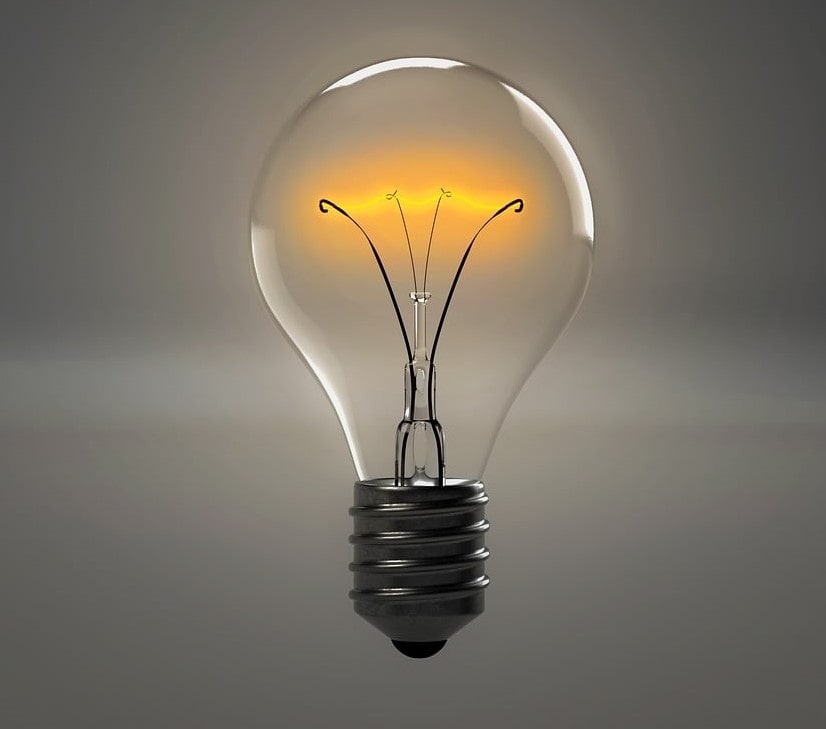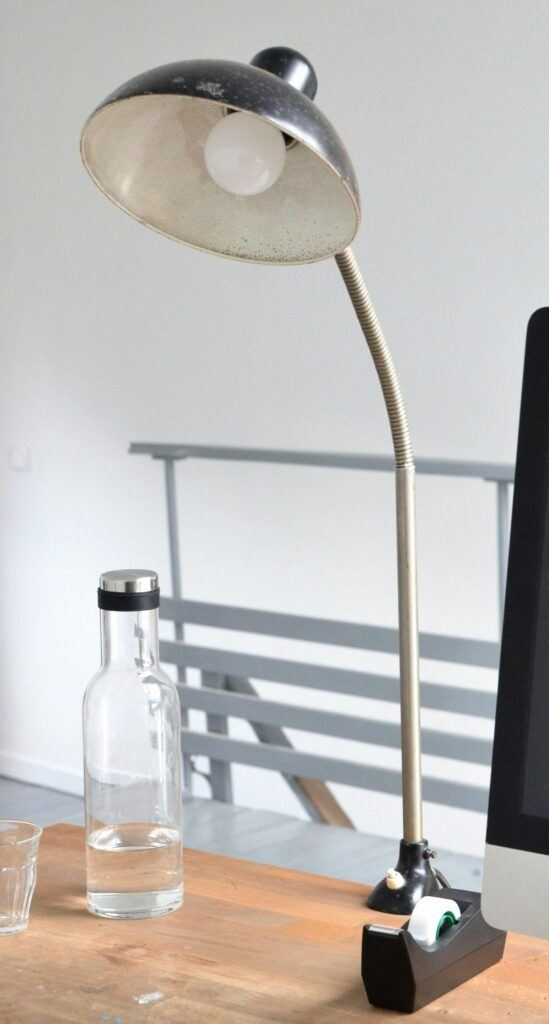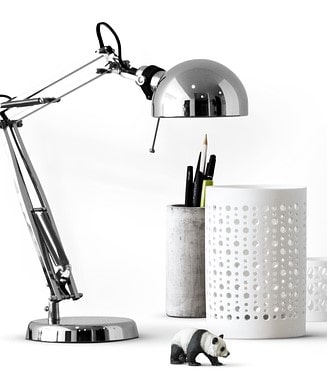Imagine walking into your home office to start the day. The atmosphere you step into can either motivate you or cast a shadow on your productivity.
Your choice of lighting affects the atmosphere of your home office. The light (and shadows) around you aren’t just about visual comfort. Lighting shapes your attitude and actions; it can either diminish or enhance your productivity.
Let's explore some home office lighting ideas for better productivity. • Basic types of lighting • Optimizing natural light • Selecting artificial lighting • Beyond the bulb
Basic Types of Lighting
Let’s begin by understanding the basic types of lighting you are likely to encounter in your home office: natural, artificial, ambient, task, and accent. Each plays a unique role.
Natural light. To put it simply, natural light is light from the sun; it is the ambient light created by sunlight.
According to ophthalmologists and optometrists from the Atlantic Eye Institute, natural light is the easiest on your eyes. But natural light can also impact your mood and energy levels by regulating circadian rhythms. Your circadian rhythms affect your sleep patterns, alertness, and even hormone release, which are all pivotal for maintaining high productivity. (If you are feeling especially “sciency,” check out the 2019 Somnologie article, “Effects of light on human circadian rhythms, sleep and mood.“)
Artificial light. Artificial light is light that emanates from man-made sources, such as lightbulbs or your computer screen.
While natural light is the gold standard, don’t underestimate the role of artificial lighting. Artificial lighting ensures that you can continue working on cloudy days or when the sun sets. Like natural light, artificial light is believed to affect circadian rhythms – a plus when it comes to ensuring your energy levels don’t dip, though also one of the reasons we are advised to limit screen time in the hours before we go to bed.
Ambient light. Ambient light, which originates from both natural and artificial sources, is the light available in a given environment.
Ambient light diffuses throughout the environment due to surface reflection and refractive effects. In contrast to “directional lighting,” which emanates from a discernible source, ambient light is light that comes from all directions.
Task lighting. According to Rensselaer Polytechnic Institute’ s Lighting Research Center (LRC), “in a room that may already have some ambient light,” task lighting is lighting that “provides increased light for specific tasks.” Task lighting offers “extra light to easily see fine details,” the LRC writes, and is “especially useful for seeing small objects or objects of low contrast.”
The desk lamp in your home office is one familiar example of task lighting. Table and floor lamps and wall-mounted swing-arm lamps are other examples. Desk lamps with articulated arms or wall-mounted reading lamps can provide concentrated light that prevents eye strain, yet that doesn't spill over into the entirety of the office space.
When it comes to specific tasks, task lighting is your best bet. These targeted beams focus precisely where needed – on a document you’re reviewing or a work of art you’re creating.
Accent lighting. Accent lighting is lighting that is used “to draw attention to specific features,” writes lighting expert GE Lighting. An example of accent lighting might be a wall-mounted fixture that spotlights a painting or other piece of art.
Accent lighting might seem more decorative than functional, but it’s not just about aesthetics. Accent lights can reduce glare and contrast, making it easier to transition between the focus required for screen work and the relaxation needed during breaks.
Optimizing Natural Light
How can you make the most out of natural light, harnessing it to work in harmony with your body’s natural rhythms? How can sunlight not only augment productivity, but make your home office an inviting haven?
A 2018 article on natural light in the workplace, published in the Harvard Business Review, reported on a Future Workplace survey of employee experience. The survey found that “access to natural light and views of the outdoors” were the top attributes employees wished for in their “workplace environment.” Moreover, surveyed employees reported that a lack of “natural light and outdoor views” made them feel tired and glum.
The Harvard Business Review article further reported on research by Cornell University Professor Alan Hedge. Dr. Hedge’s research “revealed that workers in daylight office environments reported a 51% drop in the incidence of eyestrain, a 63% drop in the incidence of headaches and a 56% reduction in drowsiness.”
As you can see natural light isn’t just a budget-friendly lighting solution. It’s a game changer in workplace environments, including in your home office. The glow from the sun can lift your spirits, keep you alert, and even diminish the need for artificial lighting throughout the day.
But how best to harness natural light for better productivity?
Desk placement is paramount. Direct sunlight introduces glare, which can strain your eyes and distract you from your work, so situate your desk parallel to a window rather than facing it or with your back to it. This easy adjustment minimizes glare and prevents contrast that tires your eyes.
Consider your room’s color palette. Light, matte surfaces reflect daylight without causing glare. A well-placed mirror can also bounce light into dim corners, extending the reach of natural illumination throughout your work area. (For more on color, check out my article, “How To Decorate Your Home Office On A Budget.”)
Remember that overexposure to UV rays is harmful. Most contemporary windows include UV protection in their panes. But exercise caution. While natural daylight is great for your eyes, UV rays in large doses are associated with skin cancer.
While natural light’s benefits are plentiful, relying on it solely isn’t wise. The sun’s position changes throughout the day affecting the quality of light in your workspace. Your aim should be to augment natural light – the main actor – with artificial lighting solutions.
Selecting Artificial Lighting
This brings us to the realm of artificial lights. Selecting the right type can transform your space into an efficient, comfortable work area … not just when the sun sets or on overcast days.
Selecting artificial lighting is all about appreciating differences in lightbulbs and understanding other aspects of lighting, such as brightness and color temperature.
Lightbulbs
Let’s first consider four different types of lightbulbs: incandescent, halogen, LED, and CFL.

Incandescent. Commercially viable incandescent lightbulbs for residential electric lighting were first produced in the late 1870s and have been around ever since.
Incandescent bulbs produce light by using electricity to heat a filament until it glows. Less than 5 percent of the electric energy consumed by incandescent bulbs is converted into visible light, however. The rest is lost as heat.
Despite having transformed residential (and commercial) lighting incandescent lightbulbs are clearly not energy efficient. Consequently, various governments, including the United States, have passed legislation to phase out incandescent lightbulbs in favor of more energy-efficient types of electric lighting,
Halogen. Halogen lightbulbs last nearly twice as long as incandescent bulbs – around 2500 hours as opposed to 1200 hours. Otherwise, they work much like incandescent bulbs and offer a similarly natural light.
Despite this improved lifespan, halogen bulbs, like incandescent bulbs, consume more energy than they produce and, thus – also like incandescent bulbs – have been effectively banned by federal mandates that require lights to produce more light energy than they use.
Breaking the lightbulb law? Given federal bans on manufacture and importation, is it legal to purchase incandescent or halogen bulbs? GE Lighting explains it this way: Purchasing or using halogens and incandescent bulbs is not illegal. However, since they do not meet the federally mandated manufacturing standards, they will no longer be produced. Eventually, all remaining halogen and incandescent bulbs will be purchased, with no new supply to fill in. So, if you wish to use an incandescent or halogen lightbulb, you're not breaking the law. You're just about to be out of luck.
LEDs. “If you’re looking for an incandescent or halogen replacement, LED lights may be an ideal solution,” GE Lighting suggests.
LEDs or light-emitting diodes, are today’s most energy-efficient lighting technology, according to the U.S. Department of Energy (DOE). They are also long lasting and durable. “Residential LEDs – especially ENERGY STAR rated products – use at least 75% less energy, and last up to 25 times longer, than incandescent lighting,” the DOE reports.
LEDs emit directional light and do so without the use of light trapping reflectors and diffusers. This makes LED lightbulbs especially well suited to task lighting … like my desk lamp (which is an LED light).
A typical LED bulb costs from $2 to $20 dollars.
CFLs. Compact Fluorescent Lamps (CFLs) are another option. Fluorescent lighting has been around since the 1930s, but unlike standard fluorescent lighting – which is generally available in 48 inch to 84 inch tubes – CFLs are much smaller tubes designed to replace incandescent bulbs.
CFL bulbs are more expensive than incandescent bulbs, but typically less expensive than LED bulbs.
CFLs may take a moment to warm up to full brightness. That’s because – unlike incandescent bulbs in which electricity runs directly through the filament that causes the bulb to glow – in CFL bulbs electric current must first drive argon and mercury vapor through a tube generating ultraviolet light which then excites a fluorescent coating on the inside of the tube which finally emits visible light. “This entire process typically takes 30 seconds to 3 minutes to complete,” reports the Energy Star website, “but once the electricity starts moving, CFLs use about 70% less energy than incandescent bulbs.”
While CFLs are long lasting and energy efficient, be mindful that not all CFLs are dimmable. If you need a CFL bulb that dims, carefully check the packaging; using a non-dimmable CFL bulb with a dimmer can cause your light or lamp to burn out prematurely.
Brightness
Now that you understand the different types of lightbulbs, here are a few measures of lighting that will help you make your final selection.
Watts are a measure of how much energy lightbulbs use. Lumens measure how much light a bulb emits. LEDs and CFLs produce more light than they consume. Since LEDs and CFLs will soon be the only lightbulbs available when purchasing lightbulbs it makes sense to give lumens as much consideration as watts. Or more.
But is brighter better?
While bright lights can help keep you awake and engaged, they can also contribute to contrast and glare, which, in turn, lead to eye strain and headaches. Glare is generally caused by a too bright light being either directly in front of or directly behind you. Both natural and artificial light can create glare.
“If you can change the angle of your workstation, do so,” advises the Atlantic Eye Institute. “Otherwise, alter the angle of blinds or shades to diminish sun glare. If a light is too bright, replace the bulb with one that has a lower wattage or kelvin (K) rating.”
Dimmable lights allow you to tailor the intensity of the light to your needs throughout the day. Just remember not all CFL bulbs are dimmable. Neither are all LED bulbs. Check the manufacturer’s labeling carefully.
Color temperature
The appearance of the light provided by a lightbulb is described in terms of color temperature. Understanding color temperature will help you choose light that has a “look and feel” that’s right for you.
Color temperature is a measure of the color of a visible light source; it is usually measured in “degrees of kelvin (K) on a scale from 1,000 to 10,000,” according to Westinghouse Lighting. Color temperature is used to characterize “the look and feel of the light produced” by a lightbulb.
Kelvin ratings for most commercial and residential lighting are somewhere between 2000K to 6500K. Color temperatures on the lower end of the kelvin scale (from 2000K to 3000K) produce a warmer light with a yellowish glow that is easy on your eyes. Higher color temperatures (above 3100K) emit a cooler, bluish light which, according to some studies, can improve focus and alertness during work hours.
Light fixtures
Your perfect lightbulb now must find its home – the perfect lighting device.
The hunt for the perfect light fixture is about striking a balance. You want something that fits your style and adds to your office’s overall aesthetic but never at the expense of function. It’s not just about looking good; it’s about working well.
Get a gooseneck lamp. Hands down, the very best lamp for an office is a flexible gooseneck lamp. And the best part is the flexibility. The gooseneck lamp's light is attached to a bendable shaft. This makes it easy to adjust the position of the light and illuminate with precision whatever you are reading or working on. Gooseneck lamps have been around for almost a century and remain widely available today. I have an antique gooseneck desk lamp (with an incandescent bulb) on my desk upstairs and a brand new LED gooseneck desk lamp that I purchased at Walmart a couple months ago on my desk in the basement. Right up there with a flexible gooseneck lamp is a "swing arm" desk lamp, which, while not bendy like a gooseneck, can still be maneuvered to target lighting.


Beyond the Bulb
Home office lighting doesn’t stop at the desk lamp or light switch. You may also want to consider these innovative gadgets and lighting solutions.
Smart lighting. Smart lighting solutions have revolutionized the way we live and work, offering unprecedented control and customization. These systems allow you to adjust brightness, color temperature, and even hue to suit your task or mood, all from your smartphone or voice-activated device. If you enjoy tech and have the budget, smart lighting can be a robust tool for molding your home office environment to work in concert with your personal rhythm.
Light therapy. What about those long winter months where daylight is scarce, and you might find your energy waning? Light therapy lamps are designed to mimic daylight and can be an effective bulwark against Seasonal Affective Disorder (SAD). Positioning one of these in your home office can help regulate your natural body clock, maintain your energy levels, and stave off the slump that often comes with gray skies.
Light diffusers. Finally, don’t overlook these smaller, yet smart, additions that can make a big difference. Options like light-diffusing shades can soften harsh artificial lighting, while monitor-mounted lights can reduce glare on your screen, mitigating eye fatigue.
The key takeaway is to embrace lighting not just as a necessity but as a dynamic tool. Let your workspace lighting be fluid, adaptive, and as nuanced as the work you do in the space.
Final Thoughts
Our power goes out rather often where I live. The handful of times I have tried to keep working under laptop battery power and candle light? What a pain! These moments have reminded me of how important the right home office lighting truly is.
The good news is that most days I can reliably enjoy residential electric lighting … and you can too. And, unless you are dealing with overhead lights or wall mounted fixtures, your home office lighting will not cost a bundle. But it will make a HUGE difference in your comfort and productivity. So give it some careful thought.
Bad lighting breeds headaches and frustration. Good lighting, energy and success!
If you have any questions or would just like to commiserate with me over the demise of the incandescent lightbulb (I get it!) PLEASE SHARE in the comments below.

